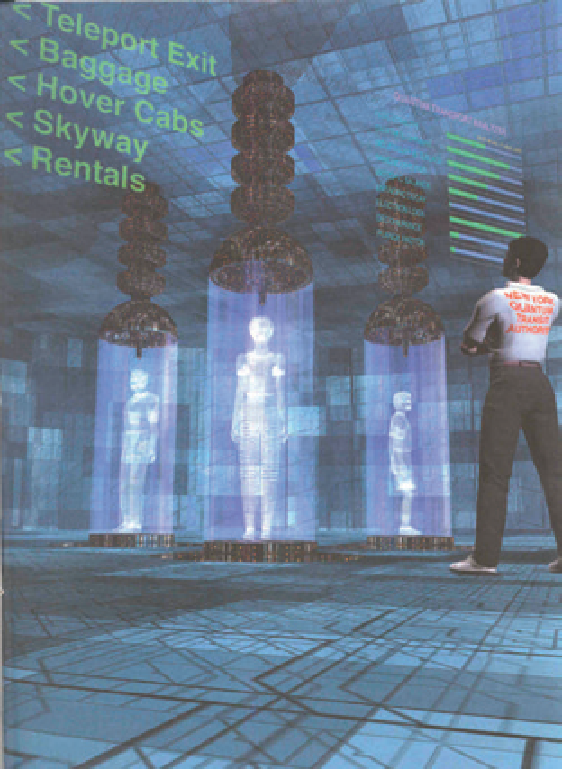Information Technology Reference
In-Depth Information
Fig. 17.23. An artist's impression of a
future
New York Quantum Transit Authority
.
Michael Crichton envisages a similar
quantum teleportation system being
used for time travel in his novel
Timeline
.
quantum states of an electron. Many laboratories are now trying to build
these quantum computers. Their advantage is unimaginably great power - so
great that you can indeed describe and compress a three-dimensional living
object into an electron stream. Exactly like a fax. You can then transmit the
electron stream through a quantum foam wormhole and reconstruct it in
another universe. And that's what we do. It's not quantum teleportation. It's
not particle entanglement. It's direct transmission to another universe.
28
This description liberally mixes fact and fiction. It is not clear what the “thirty-
two quantum states” of an electron are, and quantum computers certainly do
not have the power to compress living things into an electron stream. However,
quantum entanglement has actually led to a form of teleportation - successfully
transporting a quantum state over a distance without measuring or disturbing it.
What Crichton gives us is a blend of Verne's scientific extrapolation and Wells's
invention. He mixes interesting quantum technologies and ideas - quantum
computing, teleportation, entanglement, the quantum multiverse, and space-
time wormholes - to create a plausible technological backdrop to his novel.
One of the hallmarks of good science fiction writing is the ability of the
author to look more than just one step ahead. Crichton puts his finger on one
of the potential problems for quantum computing. Quantum information is
stored as delicate differences in quantum superpositions and, as for ordinary
classical computers, this stored information is subject to errors. In ordinary

Search WWH ::

Custom Search